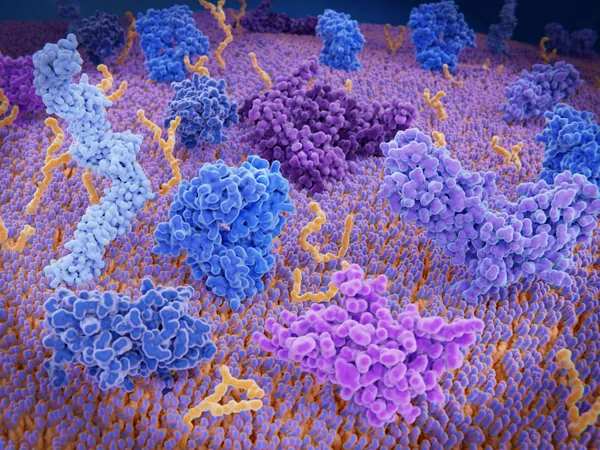
Revolutionary T Cell Discovery Could Transform Cancer Treatment and Immunotherapy
2025-04-11
Author: Rajesh
Groundbreaking Two-Phase Activation of T Cells Uncovered
A pioneering study from the Max Planck Research Group at Julius-Maximilians-University Würzburg, Germany, is shaking up our fundamental understanding of how the immune system activates T cells. Contrary to the long-held belief that T cell priming was a straightforward, single-phase process, researchers reveal it actually unfolds in **two distinct phases**. This exciting discovery, reported in *Science*, promises to enhance the efficacy of immunotherapy for cancer and other chronic diseases.
Unlocking the Secrets of T Cell Activation
Lead researchers Dr. Katarzyna Jobin and Dr. Deeksha Seetharama from the Würzburg Institute of Systems Immunology elaborated on their findings: "The first phase of T cell activation recruits a wide array of specific T cells, while the newly identified second phase fine-tunes this process by expanding those T cells that can most effectively tackle a pathogen. This two-phase activation ensures a more potent immune response."
Revisiting T Cell Activation Processes
For years, scientists viewed T cell priming as a self-sufficient process, where initially activated T cells would proliferate automatically. However, the innovative use of advanced intravital microscopy by the German research team has unveiled a second phase occurring **two to three days post-priming**, which focuses on the **selection and expansion** of the most effective T cells.
The Role of CD4 Helper T Cells
The study's revelations were driven by questions surrounding the role of CD4 helper T cells and how signals like interleukin-2 (IL-2) reach T cells. Senior author Dr. Wolfgang Kastenmüller emphasized the shift in understanding: "Previously, we believed one phase was enough, with activated T cells operating on ‘autopilot’—but now we see how high-affinity T cells are specifically selected for optimal action."
A Closer Look at CD8 T Cell Dynamics
Investigating antigen-specific CD4, CD8, and regulatory T (Treg) cells, the researchers found that T cells engage in vigorous interactions with dendritic cells (DCs) during the first phase. After about 24 hours, they detach to proliferate. Notably, CD4 helper T cells were shown to be crucial in producing IL-2, a key signal for the clonal expansion of CD8 T cells.
The New Phase of T Cell Priming and Its Implications
In this trailblazing discovery, the second phase, observed through detailed imaging, revealed that certain CD8 T cells reinteract with DCs to receive vital signals for further activation. This activation depends on the chemokine receptor CXCR3, which leads them to special niches for IL-2 signaling. The study highlighted that only CD8 T cells with high-affinity for their target antigen can access this pivotal second phase.
A Paradigm Shift for Immunotherapy
These insights could revolutionize T-cell-based therapies such as CAR T-cell therapy, commonly used for specific blood cancers. Better comprehension of T cell reactivation timing and methods may lead to enhanced treatment outcomes. With cancer and chronic infections causing cycles of immune suppression, understanding this process is crucial for improving response rates to existing therapies.
Looking Ahead: New Strategies for Enhancing Immune Responses
Building on this groundbreaking research, the Würzburg team aims to develop novel strategies for vaccines and explore ways to manipulate the second phase of T cell priming. The goal is to bolster immune responses in patients facing tumors or persistent viral infections, unlocking a new frontier in immunotherapy.



 Brasil (PT)
Brasil (PT)
 Canada (EN)
Canada (EN)
 Chile (ES)
Chile (ES)
 Česko (CS)
Česko (CS)
 대한민국 (KO)
대한민국 (KO)
 España (ES)
España (ES)
 France (FR)
France (FR)
 Hong Kong (EN)
Hong Kong (EN)
 Italia (IT)
Italia (IT)
 日本 (JA)
日本 (JA)
 Magyarország (HU)
Magyarország (HU)
 Norge (NO)
Norge (NO)
 Polska (PL)
Polska (PL)
 Schweiz (DE)
Schweiz (DE)
 Singapore (EN)
Singapore (EN)
 Sverige (SV)
Sverige (SV)
 Suomi (FI)
Suomi (FI)
 Türkiye (TR)
Türkiye (TR)
 الإمارات العربية المتحدة (AR)
الإمارات العربية المتحدة (AR)